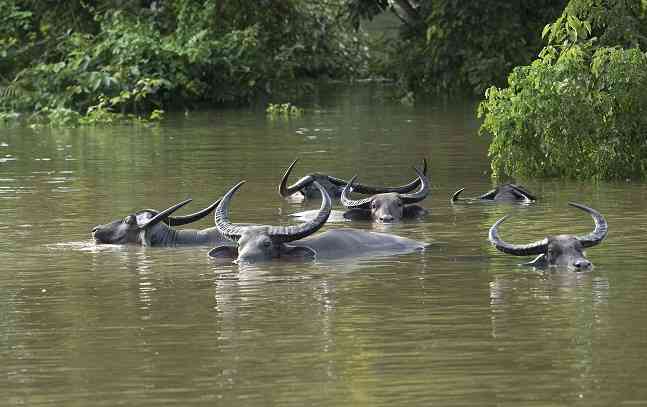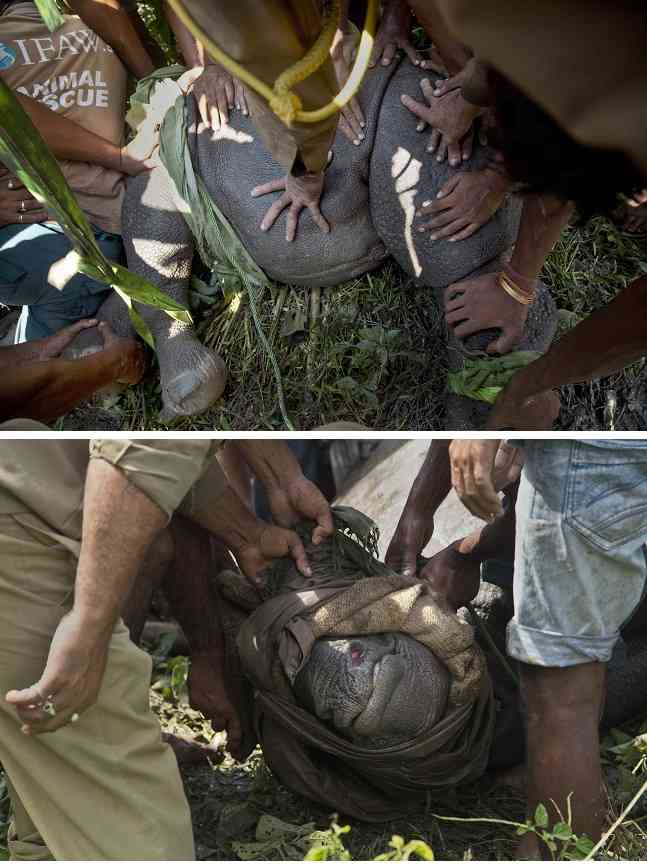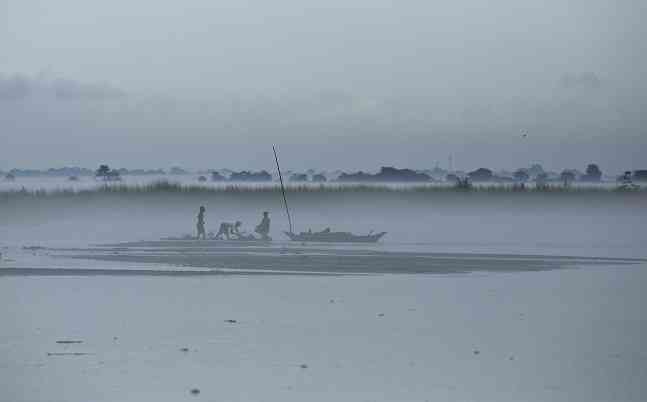Lakhs displaced, rhinos killed: Move over Gurgaon, it's the Assam floods that really need our attention
26 people have died, more than 18 lakh have been displaced and Kaziranga National Park has been completely inundated in the Assam floods.

In Short
- Assam floods have killed 19 people in last 72 hours.
- 18 lakh people have been displaced due to flood waters.
- More than 150 villages had to be evacuated.
While images of waterlogged streets of Gurgaon, Bengaluru and Mumbai flood our timelines, an actual flood has crippled the north-eastern state of Assam - and it is the worst one in a decade.
Lakhs of people have been displaced and wildlife sanctuaries inundated by an overflowing River Brahmaputra and its tributaries.
As many as 26 people have reportedly died in the state and scores of animals have either been killed, washed away or are endangered.
Here's all you need to know about the situation:
1. Nineteen people have died in 72 hours.
2. Almost 18 lakh people have been displaced, but only 2.3 lakh have taken shelter at relief camps.
3. More than 150 villages had to be evacuated. In all, 3,374 villages have been affected by the deluge.

4. Nine rivers, including the Brahmaputra and its tributaries, are flowing above danger mark along 18 districts and inundating new areas. Breaches have been reported in river embankments in Kokrajhar, Jorhat, Bongaigaon, Dibrugarh and Golaghat districts.
5. The NDRF, SDRF and Indian Army have set up more than 517 relief camps and 186 relief distribution centres to help the displaced.
NDRF operation at various places in Assam such as Nasumguri banglajhora, Nepalibasti, Goabari & Majuli . pic.twitter.com/sSU54JCa99 NDRF (@NDRFHQ) July 26, 2016
6. Farmers across 22 districts face immense losses with their crops destroyed by floodwaters and their livestock left abandoned.
7. According to a rough estimate by the Assam State Disaster Management Authority (ASDMA) around 12 lakh poultry animals and several lakh poultry birds have been affected.
8. Several districts have been completely cut-off from the rest of the state. Chunks of main roads in Morigaon, Jorhat and Dibrugarh districts have swept away, snapping road communications.
Mobile phone signals are unavailable in many parts and power transmission lines are down.
9. The situation will remain critical in the coming days, as heavy monsoon rains have been forecast for at least another 48 hours in Assam.

10. Kaziranga National Park is completely inundated.
The Kaziranga National Park, home to the world's single largest population of one-horned rhinos, has been completely inundated by flood waters. This is the worst flood in Kaziranga since 1988.
Of the 2,431 rhinos in Assam, 2,401 live in Kaziranga National Park which is located on the floodplains of the Brahmaputra. In fact, the four national parks in the state account for 80% of the world one-horned rhino population.
11. Vast areas of the other three national parks - Manas, Orang and Dibru-Saikhowa - and the Pobitora Wild Life Sanctuary has also been flooded.

12. As many as 130 forest camps located in five different ranges in Kaziranga have been completely submerged, while 19 anti-poaching camps have been vacated or shifted to dry land areas of NH 37.
13. Scores of animals have been washed away or left dead.
Three rhinos, seven rhino calves and more than 18 deer have reportedly been killed in the deluge.
Rescuers were able to save eight rhino babies from being washed away. Aged between a month and a year, the babies had been separated from their mothers and were found in distressed and dehydrated.
Rescuers have also saved 42 Swamp Deer and Hog Deer living in Kaziranga and nearby forests.
14. Animals in search of dry land are being hit by speeding vehicles.
When floods hit, animals immediately scatter to search for dry land. In Assam, these animals have made it to roads and national highways, and they aren't safe there either.
Deer, elephants and rhinos have been pictured walking on NH37, and in the last 24 hours, many animals have reportedly died after being hit by speeding vehicles. Some animals, meanwhile, have even wandered into residential areas.
15. Meanwhile, an adult rhino was reportedly shot at by forest guards at a tea estate in Karbi Anglong on Friday. The rhino was seriously injured.
During floods, adult rhinos try and escape to the Karbi Anglong hills on the southern side of Kaziranga. There are 16 animal corridors on the NH-37 through which various types of animals from the Park side cross over to Karbi Anglong hills during floods.
16. Poaching is a big and very real threat at this time.
Rhinos commonly stray into nearby villages during floods, ending up as easy game for poachers. Poachers have killed many Rhinos during floods in the past. State police and forest guards are monitoring Kaziranga to prevent such activity.

17. At least seven satras (Vaishnava monasteries on Majuli island) are reportedly submerged under water. The island is one of the worst affected areas of Assam - hundreds of houses were washed away and at least 12 villages were submerged after an embankment was breached in upper Majuli.
Recent reports suggest that situation on the island has slightly improved after floodwaters started receding on Wednesday.
18. There's a LOT of anger.
People from Assam have taken to social media for the lack of attention towards the state and its current situation. There is anger towards the Centre considering floods are a recurring problem in the state, and towards national media for lack of reporting.

19. And a few slimmers of good news.
20. There is a high risk of epidemics.
The first challenge in front of relief workers will be to prepare for possible epidemics. Floods bring with them scores of water-borne diseases like malaria, dengue, cholera and dysentry, and the risk grows manifold in situations akin to the one Assam is witnessing.
21. Chief Minister Sarbanand Sonowal visited Majuli and Lakhimpur areas to take stock of situation on Thursday. Angry Majuli residents asked Sonowal why no permanent measures were taken to tackle the frequent floods. They also complained that relief material was not reaching them despite announcements.
22. Union Home Minister Rajnath Singh will take an aerial survey of Nagaon, Morigaon and Kaziranga areas of the state on Saturday.
Floods are a recurring tragedy for Assam, as the state faces a deluge almost every year. Just three months ago pre-monsoon floods had affected 1 lakh people in the state.
